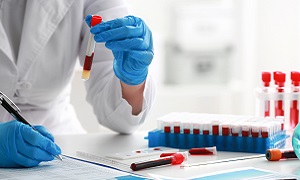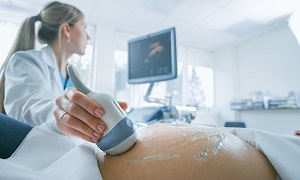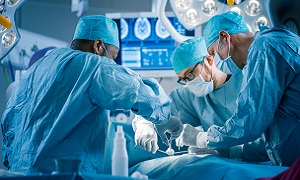Best Doctors in India for Grave's Disease treatment
Best Hospitals in India for Grave's Disease treatment
Wockhardt Hospitals, Mumbai
- City: Mumbai, India
Hospital Highlights:
- Wockhardt Hospitals were established in the year 1973, originally called First Hospitals and Heart Institute.
- Wockhardt Hospitals are super specialty health care networks in India, nurtured by Wockhardt Ltd, India’s 5th largest Pharmaceutical and Healthcare company.
- Wockhardt Hospitals is associated with Partners Harvard Medical International, an international arm of Harvard Medical School, USA.
- Wockhardt Heart Hospital performed India’s first endoscopic heart surgery.
- The hospital has a state-of-the-art infrastructure equipped with the latest technologies and modern equipment.
- It has special Centers of Excellence dedicated to the major specialties to provide hassle-free and high-quality clinical care.
Pushpawati Singhania Hospital & Research Institute, New Delhi
- City: New Delhi, India
Hospital Highlights:
- Established in 1996, Pushpawati Singhania Research Institute is one of the top hospitals in the NCR region, as well as one of the top facilities in India for gastroenterology. The hospital is one of South Asia’s first institutes in medical and surgical treatment for diseases related to digestion.
- The hospital is equipped with state-of-the art facilities coupled with the latest equipment as well as renowned consultants from various parts of India as well as other parts of the world.
W Pratiksha Hospital, Gurgaon
- City: Gurugram, India
Hospital Highlights:
- W Pratiksha Hospital, Gurugram, is one of the best hospitals in the NCR region. It is also a top hospital in India for IVF. Since its inception, the hospital has performed over 5500 successful IVFs. The hospital also specializes in gynecology.
- With over 20 years of experience in providing quality healthcare, the hospital is known as one of the most trusted and valued health providers in India.
- Equipped with world-class medical facilities and advanced technology, the hospital’s doctors and clinicians also have a track record of delivering excellent results. The hospital is also known for focusing on preventive well-being as much as on curative treatment.
- The hospital has earned the trust of its patients, by providing the best available treatments at affordable costs.
Narayana Superspeciality Hospital, Gurugram
- City: Gurugram, India
Hospital Highlights:
- Situated near DLF Cyber City, Gurugram, Narayana Superspecialty Hospital is one of the top medical facilities in the Delhi NCR region, catering to the needs of the people. Known for its commitment to quality medical care and patient service, the hospital is a state-of-the-art facility with planned and well-equipped sections, which includes a spacious OPD area as well as comfortable patient rooms.
- It is the closest super-specialty hospital from Indira Gandhi International Airport towards Gurugram, and also the nearest super specialty hospital from DLF Cyber City. It is also close to major residential areas in Gurugram.
- It is part of the renowned Narayana Health Group. Established in 2000, by Dr. Devi Shetty, a renowned cardiac surgeon, it has grown to be one fo India’s leading healthcare groups.
Sir Ganga Ram Hospital, New Delhi
- City: New Delhi, India
Hospital Highlights:
- Sir Ganga Ram Hospital, New Delhi is known to provide the latest medical procedures with the latest technology in all of its units.
- The hospital has a team of reputed doctors, nurses, and healthcare professionals that ensure that patients receive quality care at affordable costs.
- Staffed with a team of highly qualified doctors, dedicated nurses, and paramedical and non-medical staff, the hospital aims to lead in healthcare delivery, medical education, training, and research.
- As per the vision of the founder, the hospital also provides free treatment to the economically weaker sections of society.
- Sir Ganga Ram Hospital also provides training to young doctors under the Diplomate in National Board(DNB) program. The DNB program at the hospital was started in 1984 and it is known for currently running the maximum number of DNB specialties in the country. It also has the distinction of having the first bone bank in India.
CK Birla Hospital, Gurugram
- City: Gurugram, India
Hospital Highlights:
- The CK Birla Hospital in Gurugram is a NABH-accredited multi-specialty hospital.
- The hospital strives to increase the quality of healthcare by focusing on UK NHS nurse and midwife training requirements. Policies and practices derived from the National Institute for Health and Treatment Excellence (NICE) recommendations in the United Kingdom ensuring that a strong focus on safety, high-quality clinical care, and sanitation is maintained.
- The hospital’s cutting-edge technology and facilities allow for real-time communication and seamless collaboration among caregivers, ensuring accuracy and the best possible results. Those with foreign experience and accreditations make up part of the hospital’s team of clinicians.
KIMS Hospital, Hyderabad
- City: Hyderabad, India
Hospital Highlights:
- KIMS Hospital (a brand name of Krishna Institute of Medical Sciences) is one of the largest and best multi-speciality hospitals in Hyderabad. The hospital provides various treatments to an enormous number of patients.
- The hospital has a capacity of more than 3000 beds. KIMS Hospitals offers different healthcare services in more than 25 specialities and super specialities.
- The hospital is equipped with modern medical equipment and technology. It has robotic equipment to provide minimal invasive techniques for patients.
- The hospital is aimed at providing world-class healthcare facilities and services at an affordable cost for patients.
- The various specialities and departments of the hospital include neurosciences, gastroenterology & hepatology, robotic science, reproductive sciences, dental science, oncological sciences, organ transplantation, heart and lung transplantation and mother and child care.
Fortis Hospital, Shalimar Bagh
- City: New Delhi, India
Hospital Highlights:
- Fortis Hospital in Shalimar Bagh is a multi-super specialty hospital that strives to provide world-class patient care by leaving no stone unturned.
- Fortis, Shalimar Bagh, with 262 beds and a 7.34-acre footprint, provides the best level of medical care through its team of doctors, nurses, technicians, and management professionals.
Reliance Hospital, Mumbai
- City: Mumbai, India
Hospital Highlights:
- Reliance Hospital is one of the best super-specialty care hospitals in Navi Mumbai.
- The main purpose of this hospital is to become a trustworthy place for the best health and hope for society. The hospital is well connected to the suburbs of Mumbai and Navi Mumbai.
- The hospital has various specialty departments, viz., Accident & Emergency, Anesthesiology, Dental Services, Dermatology, Diabetology, Dietetics Nutrition, Endocrinology, ENT, Gastroenterology, General Surgery, Gynaecology And Obstetrics, Hepato Pancreato Biliary Surgery, Infectious Disease, Internal Medicine, Interventional Radiology, Laboratory Medicine, Minimal Access Laparoscopic Surgery, Nephrology, Neurosciences, Opthalmology, Orthopaedics, Paediatrics, Pain Management Palliative Care, Physical Medicine Rehabilitation, Plastic And Reconstructive Surgery, Psychiatry, Pulmonary Medicine, Radiology, Rheumatology, Transplant, Urology Andrology, Vascular Surgery
Lilavati Hospital & Research Centre, Mumbai
- City: Mumbai, India
Hospital Highlights:
- Lilavati Hospital & Research Centre is India’s premier multi-speciality tertiary care hospital and has been recognised as a global medical excellence centre.
- Lilavati Hospital & Research Centre has built an unrivalled level of trust with its patients over the years, thanks to a solid foundation that comprises cutting-edge facilities, the best medical competence, research, education, and charity endeavours.
- The hospital is quite proud of the fact that it now serves patients from all kinds of backgrounds, not just from the United States but from all around the world.
- The hospital has a total of 323 beds, one of the largest Intensive Care Units (ICUs), 12 Operation Theatres with modern amenities, over 300 consultants, and almost 1,800 personnel.
Grave's Disease
Grave’s Disease is an autoimmune disorder that leads to the overproduction of thyroid hormones. The condition is called hyperthyroidism. Amongst the various causes of hyperthyroidism, Grave’s disease is the most common source. This disease is more common in women and people below 40 years of age.
Causes of Grave's Disease
Symptoms of Grave's Disease
The symptoms and signs of Grave’s disease can be:
- Heat sensitivity
- Anxiety
- Fatigue
- Increase in perspiration
- Erectile dysfunction or reduced libido
- Irritability
- Bulging eyes (Grave’s ophthalmopathy)
- Warm, moist skin
- Palpitations (rapid or irregular heartbeat)
- Frequent bowel movements
- Fine tremors of the fingers or the hands
- Weight loss
- Sleep disturbance
- Red, thick skin mostly on the top of feet or on the shins (Grave’s dermopathy)
- Enlargement of the thyroid gland (goiter)
Diagnosis of Grave's Disease
Your doctor may perform a physical examination to check for the signs and symptoms of Grave’s disease and diagnose the condition. He or she might ask you about your family history and medical history.
Blood tests
Blood tests help in determining the levels of thyroid-stimulating hormone (TSH). TSH hormone is a pituitary hormone that stimulates the thyroid gland. Blood tests also determine the levels of thyroid hormones. If you are suffering from Grave’s disease, you might have a lower level of TSH than normal with high levels of thyroid hormones.
Ultrasound
Radioactive iodine uptake
Your doctor will determine the rate of uptake of iodine by the thyroid gland by giving you some amount of radioactive iodine. He or she will measure the amount in the thyroid gland with the help of a specialized scanning camera. The doctor can determine whether the Grave’s disease or any other ailment is the cause of hyperthyroidism by determining the amount of radioactive iodine taken up by your body.
Imaging tests
Your doctor might recommend special imaging tests like an MRI or a CT scan.
Treatment options for Grave's Disease
Radioactive Iodine Therapy
You take radioactive iodine (radioiodine) in your mouth under this therapy. The thyroid gland takes this radioiodine into its cells and the radiation destroys the overactive thyroid cells with the passage of time. Ultimately, your thyroid gland shrinks while reducing the symptoms within a few weeks to a few months. It may increase your risk of new or deteriorated symptoms of Grave’s ophthalmopathy. The treatment is not for breastfeeding women or pregnant women.
Anti-thyroid medications
Beta blockers
Surgery
Another treatment option for Grave’s Disease is thyroidectomy (removal of the thyroid) or subtotal thyroidectomy (removal of a part of your thyroid). You might need treatment to supply thyroid hormones in normal amounts after the surgery. The associated risk with this treatment is probable damage to the nerve controlling your parathyroid glands (tiny glands located near thyroid gland) and vocal cords. You might need to take lifelong thyroid medications after this surgery.
Lifestyle and home remedies
- Releasing stress: Stress worsens or triggers Grave’s disease. So, easing your stress might be helpful. You can listen to music or take a warm bath to relieve stress. Take the help of your doctor to create a plan involving good exercise, proper nutrition, and relaxation in your regular schedule.
- Eating well and exercise: Taking a balanced diet and exercising well helps to improve the symptoms during treatment. This makes you feel better. Weight-bearing exercises help to maintain bone density.


















